One Dead As Copter Carrying Iran’s Sports Minister Crashes
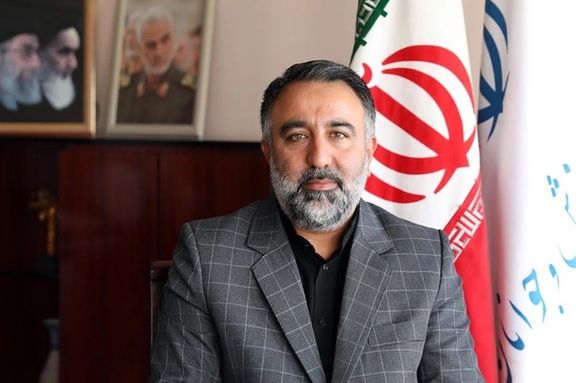
The helicopter carrying the minister of sports, Hamid Sajjadi, has crashed in southern Iran while landing in the sports complex of Baft city.

The helicopter carrying the minister of sports, Hamid Sajjadi, has crashed in southern Iran while landing in the sports complex of Baft city.
Hospital sources reported that the sports minister's adviser, who was injured in the accident, has lost his life. The adviser who died was Esmail Ahmadi, who was the IRGC liaison in the ministry and was in charge of putting pressure on athletes who removed hijab during national and international competitions.
Media in n Tehran say that the minister has cerebral hemorrhage, although the government’s official news website IRNA has not reported about his injury.
Local media report that at least four passengers were also injured and transferred to medical centers.
In an interview with IRNA, an eyewitness said he saw several people taken to medical centers after the chopper lost control while landing.
A photo of the accident shows a part of the copter is detached.
Alireza Poursalman, the head of Iran’s Fencing Federation, was accompanying Sajjadi on the trip. Some other local officials along with a group of journalists had gone to Baft with the minister.
IRNA cited Kerman’s governor, Mohammad-Mehdi Fadakar, as saying that the cause of the crash is under investigation.
In January, the European Union imposed sanctions on Sajjadi over Tehran’s crackdown on anti-regime protests.
The sanctions included a travel ban and asset freeze on the minister, who the EU accused of pressuring Iran’s athletes into silence.
Iran International obtained some documents in December 2022 showing that the security of the Ministry of Sports, in a confidential letter, asked the federations and all provincial offices to prevent athletes from showing support for nationwide protests following the death of Mahsa Amini.
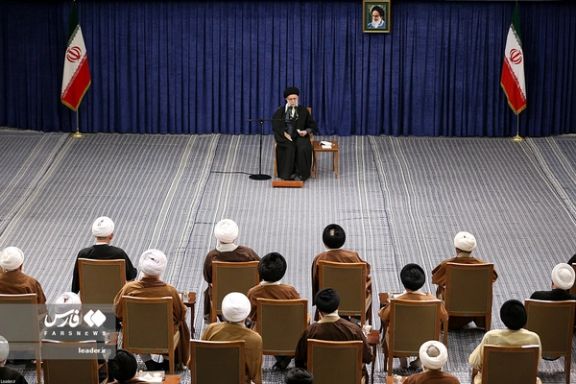
The Islamic Republic’s Assembly of Experts, the deliberative body empowered to appoint the Supreme Leader, has renewed its loyalty to Iran’s ruler Ali Khamenei.
The Secretariat of the Assembly -- also translated as the Assembly of Experts of the Leadership or as the Council of Experts – issued a statement on Wednesday, reiterating obsequious remarks about Khamenei.
In their statement, the members of the assembly described Khamenei as a force of “solidarity and national unity," and decried the slogans and slurs that are chanted against him during popular protests for over five months.
Members of the Assembly are elected from the inner circle of the regime and people very close to the Khamenei, which explains their full loyalty. The assembly – which is in charge of supervising, dismissing and electing the Supreme Leader – can run for election after being vetted by the Guardian Council, whose members are, in turn, appointed either directly or indirectly by the Supreme Leader.
The Guardian Council is composed of six Islamic law experts, selected by the Supreme Leader, and six jurists, nominated by the Chief Justice, who in turn, is also appointed by the Supreme Leader. Therefore, it is a self-serving closed-circuit system that ensures all key constitutional position are occupied by loyalists.
Interestingly enough, the head of both bodies is hardliner cleric Ahmad Jannati, who turned 96 on Wednesday, a day after he was re-elected as the chairman of the Assembly of Experts for another two years. First Deputy Chairman of the assembly is President Ebrahim Raisi.
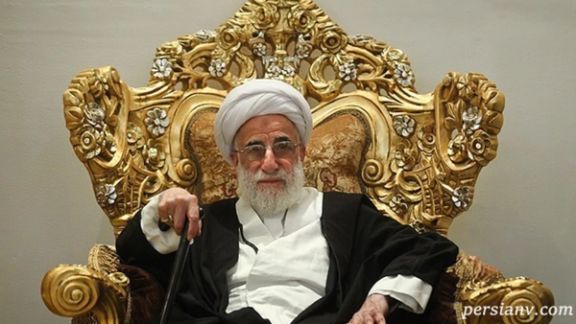
The assembly’s statement repeatedly glorified Khamenei, claiming that the "unprecedented large volume of propaganda and insults" against him indicates that the enemy understands his important role in “guidance and management of society.”
The statement also reiterated calls for the preservation of "hijab" -- or Islamic dress code -- as a clear message of the Islamic revolution and one of the "elements of the identity of the Islamic Republic of Iran". The current wave of protests, the boldest the regime has ever faced in the 43 years of its existence, was ignited when hijab enforcement patrols arrested Mahsa Amini violently that led to her death at hospital due to severe trauma on her head.
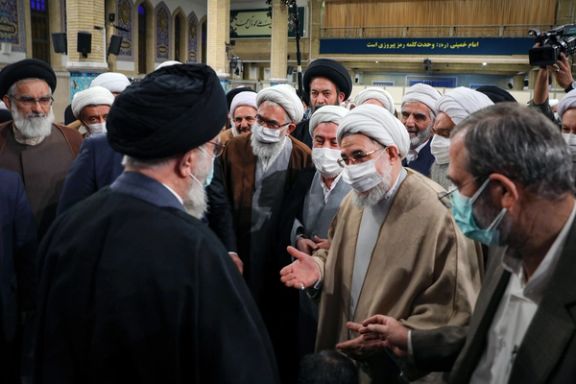
In a meeting with the chairman and some members of the Assembly of Experts in Tehran on Thursday, Khamenei said that the Islamic establishment “opposes those who believe in the Western secularism and opposes the leaders of liberal democracy, who have hatched a plot to dominate over and plunder the world’s resources behind the false flag of freedom and democracy,” he said.
According to a confidential letter obtained by Iran International in recent days, the Revolutionary Guard (IRGC) has asked the government not to disclose the budget of institutions such as the Hijab police, which are criticized by the people.
The regime has heavy-handedly suppressed protesters, executing four young men, killing well over 500, including more than 70 children, and arresting around 20,000 in the past five months.
On Monday, an estimated crowd of about 20 to 30 thousand people held a rally in Brussels outside the European Council to call on EU countries to designate Iran’s Revolutionary Guard as a terrorist organization. Thousands of Iranians from all over Europe held a massive rally in Strasbourg in January for the same purpose. Also on Monday, the EU sanctioned 32 Islamic Republic officials, including culture and education ministers, deputy IRGC commander, and several MPs. The move can be seen as a measure to justify the fact that the EU is not yet ready to designate the entirety of the IRGC.
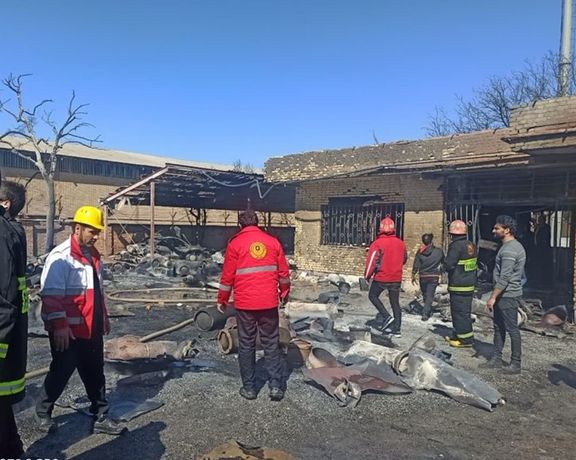
Officials in Hamedan, western Iran, says at least three people have been injured after an explosion in a large, liquefied petroleum gas charging unit.
The spokesperson of the emergency department in the city, Mohammad Shokouhi told Tasnim news website, affiliated with the Revolutionary Guard, that three ambulances were dispatched to the place after citizens reported the blast.
“Fortunately, there are no deaths in the incident so far, but three people, including a woman and two men, are injured,” he added.
The semi-official ISNA also quoted Head of Hamedan Fire Department, Sadeq Pour-Sina as saying that a building inside the center's premises caught fire as well.
Pour-Sina stated that five vehicles caught fire in this accident, reminding that carelessness during the charging of LPG capsules was the cause of the accident. It is not possible to determine the cause of the accident from independent sources.
An LPG car is designed from the factory to run on liquefied petroleum gas, or has been converted to take LPG by an aftermarket conversion company. They are sometimes referred to as dual fuel or Bi-Fuel cars, as they can switch between LPG and petrol.
Safety experts believe that the use of liquid gas and non-standard gas cylinders in vehicles is dangerous because in case of the smallest accidents, there is a possibility of explosion.
There are 25 million cars running on LPG worldwide, including 13 million in Europe alone. However, unsafe practices may lead to a higher level of risk.

A hardliner newspaper in Tehran has demanded that German embassy staff be banned from leaving Iran in response to expulsion of two Iranian diplomats from Berlin.
The editor and representative of Supreme Leader Ali Khamenei in Kayhan Daily, Hossein Shariatmadari also called for the prosecution of a person he called an "intelligence officer stationed at the German embassy".
Shariatmadari’s demand is reminiscent of the takeover of the US embassy by radicals in Tehran after the 1979 revolution when dozens of embassy staff were held hostage for 444 days.
This hardliner editor, who is said to be one of the interrogators of political prisoners, added that "The next step should be filing a complaint against the German government at the International Criminal Court for sending terrorists to Iran to massacre the oppressed people of the country."
Iran's judiciary sentenced Iranian-German national Jamshid Sharmahd to death on security charges February 20.
Sharmahd, who is also a US resident, is accused by Tehran of heading a pro-monarchist group blamed by the government for a deadly 2008 bombing and planning other attacks in the country.
In response, Germany declared two employees of the Iranian embassy personae non gratae and ordered them to leave the country on Wednesday.
However, Shariatmadari claimed, "Sharmahd has been tasked with carrying out terrorist operations by the German government, and the action of the German Ministry of Foreign Affairs in summoning the Iranian ambassador and expelling two employees of Iran’s embassy is a type of deception operation to wipe off the traces of the German government’s involvement in this terrorist operation.”
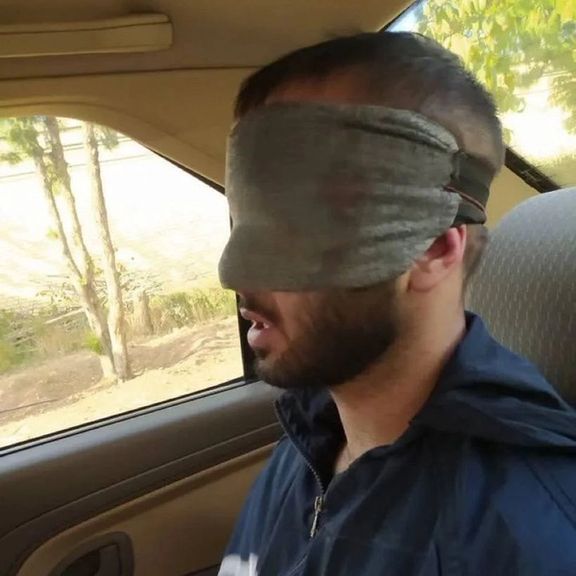
German parliament member Ye-One Rhie has expressed concern over the health condition of Iranian dissident popular rapper Toomaj Salehi who is imprisoned by the regime.
Ye-One Rhie, who is the political sponsor of Toomaj Salehi, wrote in a tweet Wednesday that “Toomaj has been in solitary confinement nonstop for 116 days. His health is worrying. His injuries by torture have never been treated. It's not only his eye but also his hands, his rips and his leg. These could lead to permanent damage.”
She went on to say that the whole world should know who is responsible: Investigator Mohammad Hossein Bakhshi and Prosecutor Mousavian charged Toomaj Salehi with "Corruption on Earth" and "War against God".
In this regard, Toomaj Salehi's twitter account also expressed concern about the deteriorating health condition of the rapper.
Salehi is an artist mostly known for his protest songs about Iran's social issues and injustice by the government. Salehi was arrested on October 30th as part of the crackdown on opponents.
His arrest came shortly after his interview with the Canadian Broadcasting Corporation, saying that “You are dealing with a mafia that is ready to kill the entire nation... in order to keep its power, money and weapons.”
In his politically charged songs such as “Buy a Rat Hole” (2021), Toomaj, a 32-year-old metalworker in Esfahan, spoke out against repression, injustice, poverty, and authorities’ own corruption and impunity from prosecution.
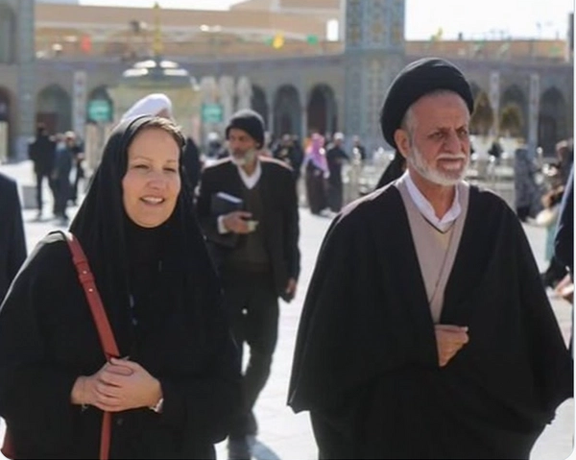
Iranians opposing compulsory hijab are outraged by the Swiss envoy’s decision to wear a long black veil during a shrine visit which a hardliner website has described as “dazzling”.
Photos of Nadine Olivieri Lozano wearing a long black veil that covers the head and the whole body during a visit to Qom were widely published by hardliner media with headlines such as “Swiss Ambassador in Iran Wears Chador” by Hamshahri Online and “Swiss Ambassador’s Visit To Our Lady Masoumeh’s Shrine in Dazzling Hijab” by Arsheh Online.
In the photos, Lozano is seen with several clerics at the shrine and receiving a gift, a religious book, from one of the shrine’s caretakers.
These media outlets said Lozano had traveled to Qom, about 120 km to the south of Tehran, to familiarize herself with Islamic culture and art and the architecture of the shrine. Qom is Iran's second most important religious city, after Mashhad and is home to biggest and most prestigious of Iran's Shiite seminaries.
“Instead of reacting to the atrocities of the regime against women for flouting their hijab or visiting the graves of women and girls who were innocently killed, the Swiss ambassador, who is a woman herself, dons a chador and visits the Shrine of Masoumeh in Qom alongside their killers,” one of the critics, Sarbaz-e Vatan (Soldier of the Motherland), twitted with a photo showing the Swiss ambassador walking with a cleric in the courtyard of the shrine.
Mehdi Hassanpour, another critic, argued in his tweet that the Swiss ambassador’s wearing of the black veil was an insult to both Iranian and Swiss women and demanded her resignation.
Others pointed out that by visiting the shrine and wearing a chador, the Swiss ambassador had provided the “oppressors” of the Iranian women with an opportunity for good publicity at a time when Iranian women were fighting for freedom from compulsory hijab.
Federica Mogherini Former High Representative of the European Union for Foreign Affairs and Security in 2015.
Wearing a chador is required at Shia shrines which often provide them to women who visit. Chadors, however, do not have to be black. The black chador which the Swiss ambassador was wearing during her visit is lauded by the religious establishment as the ‘ultimate hijab’. Visiting female foreign dignitaries are also always required to wear a long headscarf but not a chador during their visit.
Hardliners and clerics of Qom often complain about women in their city not observing the hijab rules “appropriately” and demand its stricter enforcement by the authorities.
According to a commentary by the Revolutionary Guards (IRGC) linked Fars news agency two years ago, the number of women who traditionally wore the black chador was dropping by the day in Qom.
Some of the top clerics in Qom and religious hardliners have repeatedly demanded from the authorities to enforce the hijab rules in their religious city more strictly and to put an end to what they believe are signs of moral depravity among its citizens.
There has been a spate of mysterious poisonings in girls’ schools in Qom since November 30. On Wednesday, three other schools in Qom were attacked and fifteen girls were hospitalized with various symptoms of poisoning.
Some officials have also said that the poisonings could be “deliberate”. In a letter to the prosecutor of Qom Public and Revolutionary Courts Monday, Prosecutor General Mohammad-Jafar Montazeri said “deliberate criminal activity” was suspected in the school poisonings.
Many say on social media that the poisonings that have affected at least 400 girls so far are the work of an extremist group that wants to force girls give up their education by acts of terror.